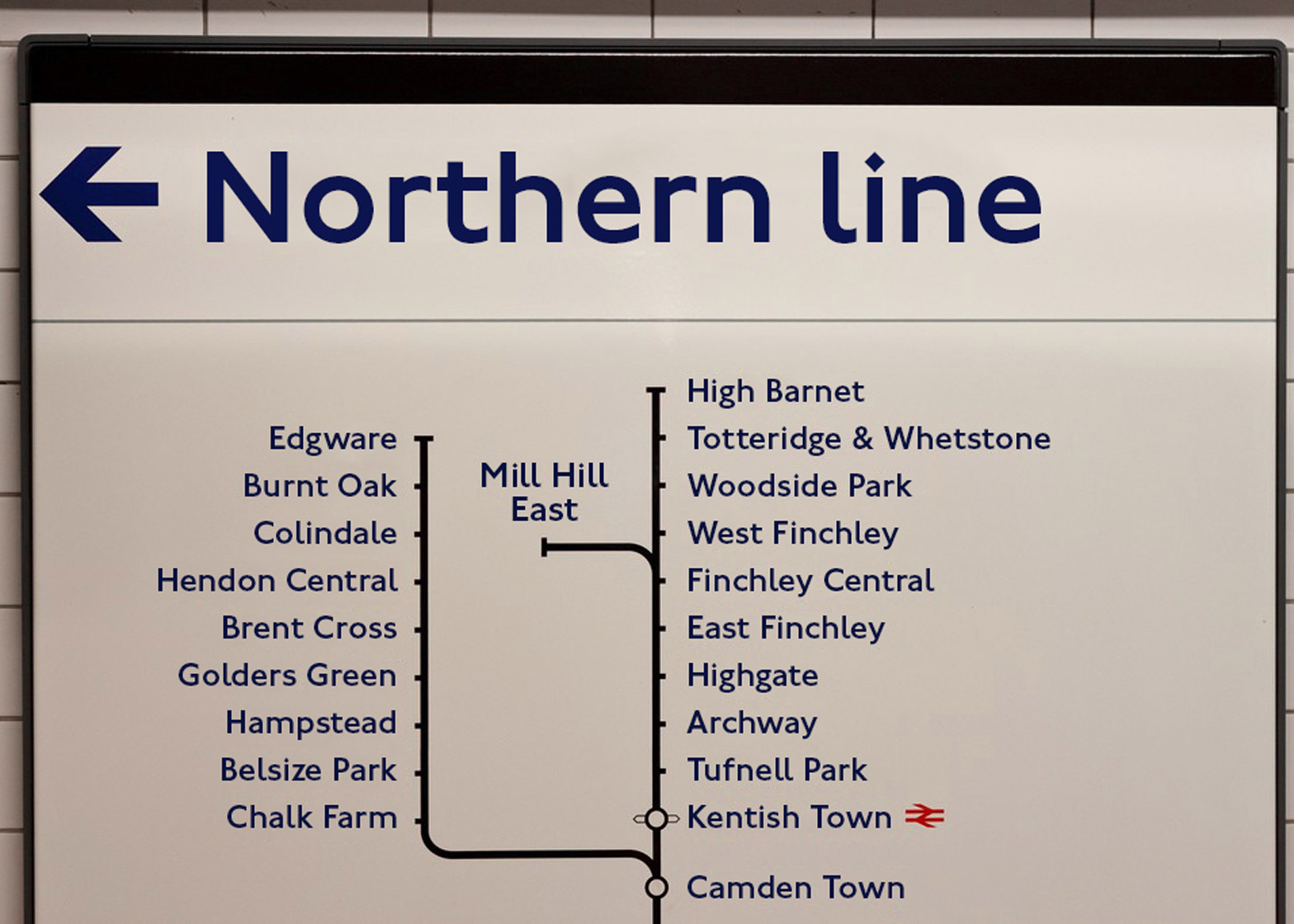In 1913, Frank Pick, the manager of “the Underground group” in London commissioned, the “father of modern calligraphy” Edward Johnston, to create a font for usage across the London Underground System. The result of this endeavour was the eponymously named “Johnston” Typeface. Seen as the origin of more “humanistic” types of sans-serif typefaces, fonts that lack serifs, but take inspiration from traditional, serif fonts. As the company expanded post-WW1, the majority of underground stations in and around London came under the control of “the Underground group.” Yet, by the end of the 1930s, the company took control of stations outside the county of London. Eventually, the stations would be owned, by what we now call TFL, and the Johnston Font would be everywhere, from the Underground to the Overground.
Johnston can arguably be considered to be one of the driving forces behind the popularity of sans-serifs, it was a break from tradition. Abandoning serifs was a bold and risky move that paid off, as Donna Steel, curator of an exhibition about Johnston, states “Having the serifs on makes things more difficult to read.. Johnston combined readability, beauty, simplicity. It’s reassuring, which is so important when we’re travelling because when we’re travelling we’re vulnerable. We know when we’ve got the right place and his message is clear.” As an avid traveller to London, I would agree with this interpretation, no matter how far out one goes in London, there is a sense of safety and uniformity that is comforting. I could be in the outer zones of London, and yet the reassuring look of the station reminds me that I am safe, and I am well connected to the centre. Whenever I would see signage that used the Johnston typeface, I would be reminded I was never too far away from the station home.

Johnston’s influence cannot be understated, and it was the work of his former pupil, Eric Gill, that transformed Johnston’s typeface into his take, Gill Sans. Soon adopted by Penguin for their paperback books, as well as the BBC, becoming the typeface used for their logo, The impact of Gill Sans cannot be understated. But, what is interesting is how Johnston allowed his student to take all the credit. Johnston was by all accounts, a man of great humility, and let his student adapt his work, allowing it to grow into a greater entity than he could have possibly imagined. Albeit, nothing can change the fact that Johnston’s typeface was the first, and whilst it has stood the test of time it has also experienced evolution. Johnston was redesigned in 1979, to become easier for printing, this new redesign included different varieties of the typeface including Light, Medium, Bold weights with corresponding Italics, Medium Condensed and Bold Condensed. Whilst other changes have occurred across the years, one of the most notable came in 2016 when TFL commissioned a redesign of the typeface to commemorate its 100th anniversary. The redesign brought about two new variations of the typeface, “hairline” and “thin.” What was interesting about this redesign though, was that it intended to bring the font back to Johnston’s original ideas. It showcased the cyclical nature of this typeface’s evolution, it ended up back at the beginning.

This is not commonplace and is a testament to Johnston’s amazing forward-thinking. When one looks at the Johnston typeface, not one part of it feels outdated, it feels modern, and one could assume that it was recently developed. Johnston was ahead of his time, and the fact that TFL has decided not to change their original font considerably is rather impressive. Many companies have significantly changed their fonts to keep up with the evolution of design but TFL has retained the design’s core. Johnston is one of the fathers of humanistic sans-serif fonts which are still extremely popular today. Having kicked off a movement that is still developing, new humanistic fonts are being created all the time and are often distributed easily to the general public. In terms of the future of the Johnston font, it is pretty clear that it will stand the test of time. As TFL expands, so will Johnston’s influence, it is ever growing with the development of London and is forever a visceral association with the city. Only recently, in Battersea, a new station was opened, a clear example of the expansion of London and by extent, the influence of the Johnston Font. As more money is invested within the capital, and transport links are improved, this will only increase. It seems that Johnston is on the way back to its core, with TFL’s aforesaid 100th anniversary, the Johnston font is rediscovering its foundations, something that is truly a testament to its success as well its established place within the modern typographic landscape.
